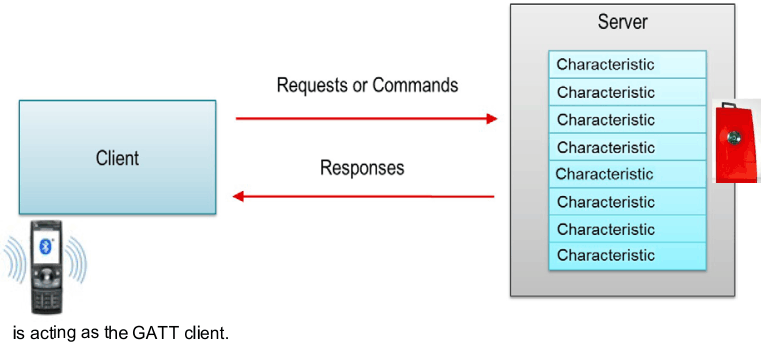SWRU271I October 2010 – January 2020 CC2540 , CC2540T , CC2541 , CC2541-Q1 , CC2640R2F
- Preface
- 1Overview
- 2The TI Bluetooth Low Energy Software Development Platform
- 3The Operating System Abstraction Layer (OSAL)
- 4The Application and Profiles
-
5The Bluetooth Low Energy Protocol Stack
- 5.1 Overview
- 5.2 Generic Access Profile (GAP)
- 5.3 GAPRole Task
- 5.4 Gap Bond Manager (GAPBondMgr)
- 5.5
Generic Attribute Profile (GATT)
- 5.5.1 GATT Characteristics and Attributes
- 5.5.2 GATT Services and Profile
- 5.5.3 GATT Client Abstraction
- 5.5.4 GATT Server Abstraction
- 5.6 L2CAP
- 5.7 HCI
- 5.8 Library Files
- 6Drivers
- 7Creating a Custom Bluetooth Low Energy Application
- 8Development and Debugging
-
9General Information
- 9.1 Overview
- 9.2 Porting From BLE-Stack 1.5.0 to 1.5.1
- 9.3 Porting From BLE-Stack 1.4.2 to 1.5.0
- 9.4
Porting From Earlier BLE-Stack Versions
- 9.4.1 Porting BLEv1.4.1 Projects to BLEv1.4.2
- 9.4.2 Porting BLEv1.4.0 Projects to BLEv1.4.1
- 9.4.3 Porting BLEv1.3.2 Projects to BLEv1.4.0
- 9.4.4 Porting BLEv1.2 Projects to BLEv1.3
- 9.4.5 Porting From CC2540 to CC2541 Project
- 9.5 Release Notes History
- 9.6 Document History
- A GAP API
- B GAPRole Peripheral Role API
- C GAPRole Central Role API
- D GATT/ATT API
- E GATTServApp API
- F GAPBondMgr API
- G HCI Extension API
- Revision History
5.5 Generic Attribute Profile (GATT)
TI designed the GATT layer of the Bluetooth Low Energy protocol stack for use by the application for data communication between two connected devices. Data are passed and stored in the form of characteristics, which are stored in memory on the Bluetooth Low Energy device. In GATT when two devices are connected, they each fill one of two roles:
- GATT Server — This device contains the characteristic database being read or written by a GATT client.
- GATT Client — This device reads or writes data from or to the GATT server. The Figure 5-8 shows this relationship in a sample Bluetooth Low Energy connection where the peripheral device (a SensorTag) is the GATT server and the central device (a smart phone) is the GATT client.
 Figure 5-8 GATT Client and Server
Figure 5-8 GATT Client and Server Typically, the GATT roles of client and server are independent from the GAP roles of peripheral and central. A peripheral can be either a GATT client or server and a central device can be either a GATT client or server. A device can also act as both a GATT client and a GATT server.